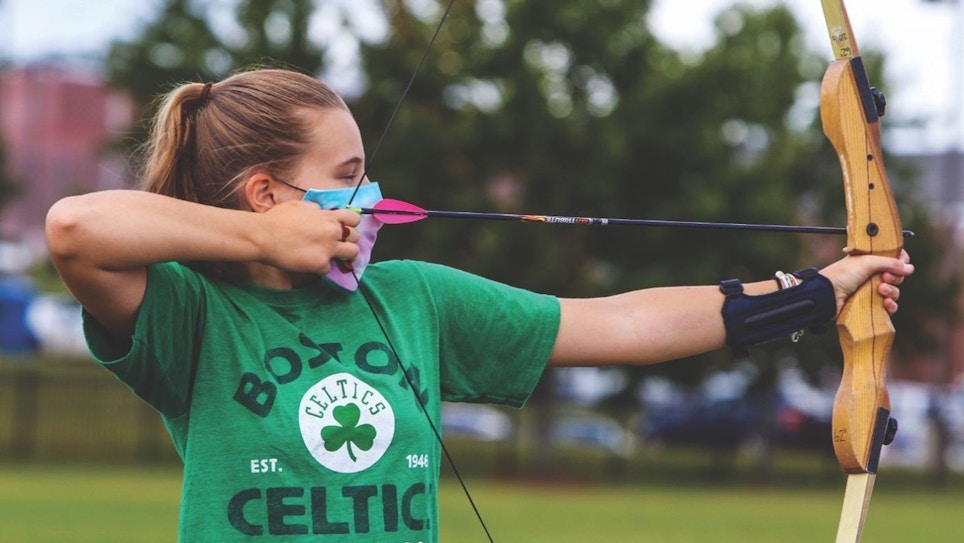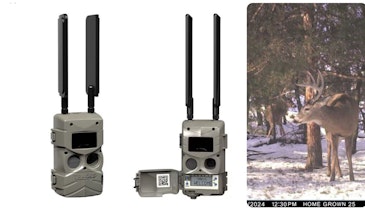It’s cold outside now, but before you know it, schools will be out, kids will be bursting with energy and parents will be looking for ways to channel that enthusiasm. Meanwhile, you’re wondering how you’ll fill your range with customers for the upcoming seasons.
The solution? Short-term archery camps. They introduce kids to archery and create sustainable revenue for longer-term programs that you can run in the fall, winter and spring.
Summer camps introduce kids to archery, provide local kids a fun place to shoot, and create sustainable revenue for longer-term programs that drive participation throughout the entire year. To start creating future archers and bowhunters, focus on a one-day or one-week archery camp format. Start planning now so you’re ready come summer.
Use this seven-step plan to get started.
Step 1: Define Your Target Age Group
Are you patient enough to teach archery to 5- or 6-year-olds? Or would you prefer to work with teenagers? If you have time, create different camps to accommodate multiple age groups. With each camp, identify its capacity. Based on your target age group and available camp staff (see Step 2), set a number that’s easily managed. Put a tagline “Only 20 spots available!” on your advertising materials (see Step 6) to encourage parents to sign up quickly and ensure your program is safe and valuable to customers.
Step 2: Select Your Staff, Designate a Leader
After determining who you want to teach, find staff willing and able to instruct the campers. Everyone who works with them should be polite, responsible and personable. It’s best practice to pick a certified archery instructor to lead the way. An instructor with a USA Archery Level 1 or 2 archery certification will help you and your staff teach with authority, credibility and confidence. Plus, certified instructors give parents peace of mind and teach newcomers proper form and technique, ensuring fun and success. Visit www.usarchery.org/coaches/find-a-course to find a list of USA Archery certification classes.
Step 3: Pick a Theme and Curriculum
Keeping your age group and instructor(s) in mind, decide which program to teach. Do you want to drive sales of recreational archery equipment? Run an Explore Archery camp! Are you focused on recruiting more bowhunters or bowfishers? Explore Bowhunting or Explore Bowfishing camps can deliver a lot of value.
As an ATA-member retailer, you can access the Explore Archery, Explore Bowhunting and Explore Bowfishing programs and curriculums. Each program helps instructors, educators and program leaders teach kids basic archery, bowhunting or bowfishing skills.
Once you pick your camp’s theme, plan its schedule and choose the curriculum. Good news! These programs include outlines that make lesson plans a cinch. Use each program’s handbook to select lessons and activities based on the age groups you’re teaching. You can definitely create short-term, camp-based events using any of these programs.
Step 4: Identify Needs
With your staff and curriculum in place, what else do you need? Is your indoor range large enough? Will you take the campers outside for activities? Do you have enough equipment for them? Do you need to buy materials for lessons and activities? Do you have access to a pond or other water for bowfishing lessons? Will you provide lunch, or will campers bring their own? Will you give away T-shirts? They’re great marketing tools but require extra work and money. As you plan each day, consider everything you’ll need to deliver fun success. Identifying needs takes a little time, but the potential return on your investment is substantial.
Step 5: Determine Dates, Time and Price
Consider the pros and cons of one-day and one-week camps. Planning and scheduling are less intensive for one-day camps, and time commitments are less demanding. On the other hand, you’ll likely make more money and build a better archery foundation with one-week camps. That means hooking more kids on archery and converting them into gear-buying customers.
Either way, study the dates of other camps in your area to decrease competition and maximize your number of potential campers. Next, determine the most convenient drop-off and pick-up times for parents. Last, consider everything from Step 4 to help set a reasonable price for your campers. Factor in the time, materials and benefits you’ll provide each camper. Study what similar camps in your area charge for services they provide and go from there.
Step 6: Advertise, Market and Promote
Do all you can to promote your store and boost attendance at your camp. Market your event in newspapers, on social media and your website, and post fliers in windows and bulletin boards of nearby gyms, businesses and recreation centers. Provide news briefs about the event to media and include the dates and times of the next class. Use local resources to create advertising materials and a T-shirt design. Work with college or high school students pursuing marketing, graphic design or journalism careers, and offer them real-world experience. Plan at least a month in advance because cooperative projects take time to create, edit, review, revise and approve.
Step 7: Registration and Fee Collections
Some camps provide online registration. Work with your web developer to see if this is possible. You may also use providers such as www.archeryevents.com or www.active.com to set something up. They are easy and secure. Otherwise, create a sign up document that parents can print, fill out, and mail or drop off. Make the document available on your website and wherever you advertise and provide directions on how to get a copy. Keep track of these documents and update the participants’ list as you receive them. Set and enforce a registration deadline and provide the number of slots available. The registration document should include a liability waiver for parents to sign.
After your first camp, ask children and parents to evaluate the program to identify strengths and weaknesses. Provide a survey to get them thinking. Realize you won’t get everything right the first time. Then, learn and adapt. If you create a detailed plan and revise it as you learn, your archery shop will deliver successful summer camps that are kid- and parent-approved! Encourage them to spread the word. Next step: Plan your fall programs and keep in touch with your campers to get them excited about your fall archery classes!
To learn more about summer camps, contact Nicole Nash, ATA’s retail programs manager, at nicolenash@archerytrade.org or (502) 640-0944.







